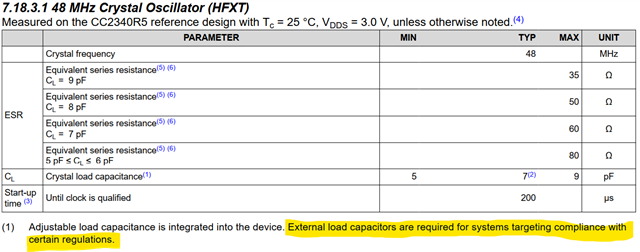Tool/software:
Hello TI,
In the datasheet SWRS292 (December 2023), on page 27, section "7.18.3.1 48 MHz Crystal Oscillator (HFXT)", Note 1 states:
"Adjustable load capacitance is integrated into the device. External load capacitors are required for systems targeting compliance with certain regulations."
Could you please clarify:
- What specific regulations are being referred to in this context?
- Why do these regulations necessitate the use of external load capacitors?

Additionally, I noticed that for CC13XX/CC26XX, the document SWRA640H (December 2018, Revised May 2024), on page 11, provides relevant details. However, where can I find equivalent guidance specifically for the CC2340R5-Q1? Thank you.

Many thanks,
Peter Wu

